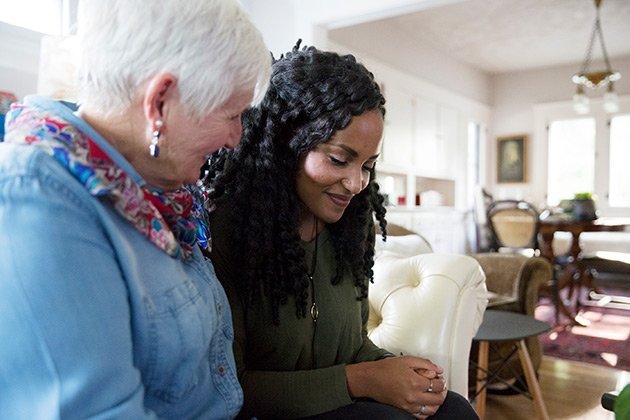Encouraging People to Tell Their Stories
How do you get participants to share their stories? Ask storytelling questions.
-
Who was God to you when you were a child?
-
What has been one of the best compliments you have received as an adult?
-
What does Easter mean to you personally?
These are storytelling questions—ones that ask people to tell the stories of their past, their present, and their future.

Building Trust
Trust develops as people get to know each other. When people come to a new group, they inwardly ask themselves questions like, do I fit here? Will I be able to do the work I have come to do? Do I like these people? Do they like me? Do we have anything in common? People don’t accomplish much work in a group until they get satisfactory answers to these questions. At best, a few people will barrel ahead while the others hang back because they don’t feel safe. The full resources of the group will not become available until all members believe it is safe to offer themselves.
Telling stories is the easiest, fastest, and safest way to help people get their trust questions answered. Storytelling questions are the easiest way to help people tell their stories. They make people feel welcome by inviting them to say, “This is who I am.” The hearers, in turn, say to themselves, “Now that I know who you are, I see that we are both human, with commonalties and areas of uniqueness.”

Principles of Storytelling Questions
Dr. Roberta Hestenes defines “sharing questions” as “one-sentence questions that give people permission to be personal and talk about themselves without violating their dignity or requiring inappropriate self-disclosure.” 1 One sentence is enough for simplicity. Talking about oneself means telling a piece of one’s story. Here are six principles of good story telling:
1. A good storytelling question should invite at least one sentence in response.
2. Storytelling questions follow a progression from less vulnerable to more vulnerable.
3. The safest stories for most people tell are about the past.
4. It’s important to design storytelling questions that everyone in the group can answer.
5. A question that asks for positive information is almost always safer than one that invites negative information.
6. Make sure that your storytelling question is relevant to the task or theme.

In crafting storytelling questions, the most basic rule of thumb is simply to know your group. These storytelling questions you craft can draw the group members together and serve as a launching pad for the work of the group, whether that is studying a passage of the Bible or performing some task.
You have been reading excerpts from How to Ask Great Questions : Guide Discussion, Build Relationships, Deepen Faith by Karen Lee-Thorpe. Find more details on building trust and storytelling including additional sample questions in this NavPress Bible study resource. It is the ideal guide for small-group leaders, Sunday school teachers, and anyone who regularly leads group discussions or committee meetings.
1 Roberta Hestenes, Turning Committees Into Communities (Colorado Springs, Colo.: NavPress 1991), p. 28.
